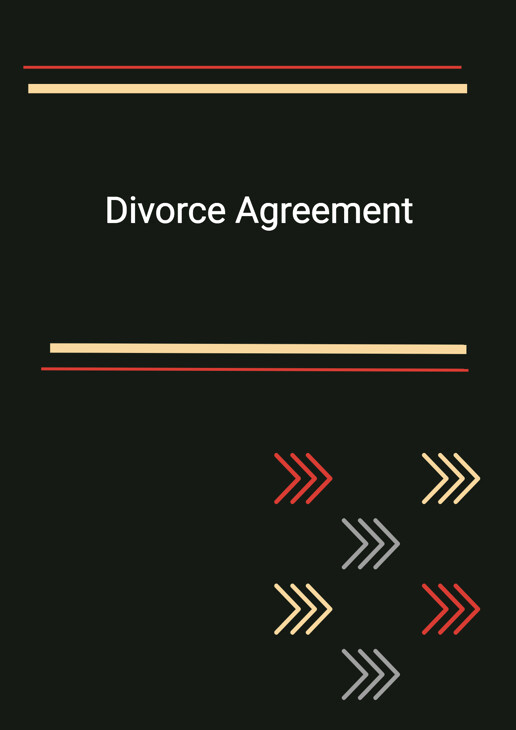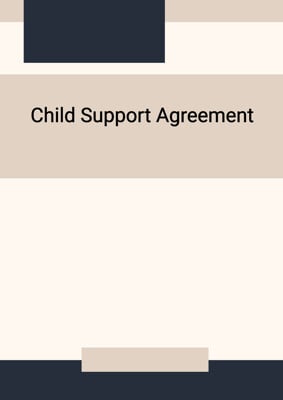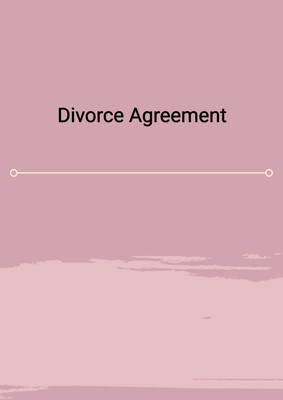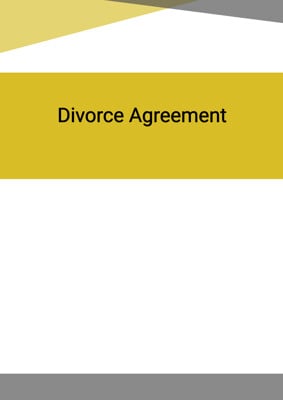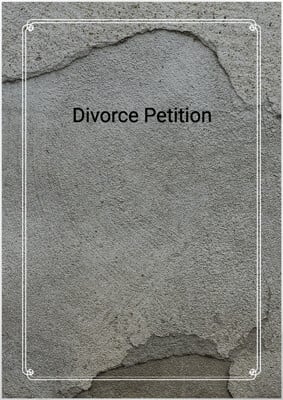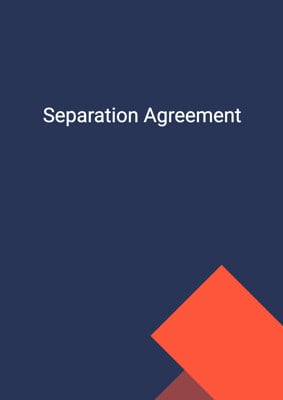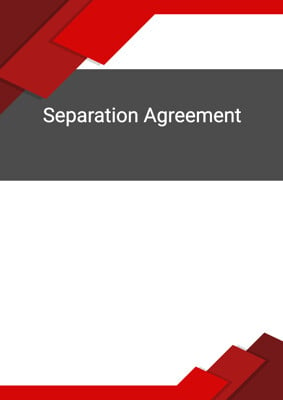How to Tailor the Document for Your Need?
01
Create Document
Fill in the details of the parties. You can click the "Fill with Member’s Information" button to complete it with information saved to your account.
02
Fill Information
Please fill in any additional information by following the step-by-step guide on the left hand side of the preview document and click the "Next" button.
03
Get Document
When you are done, click the "Get Document" button and you can download the document in Word or PDF format.
04
Review Document
Please get all parties to review the document carefully and make any final modifications to ensure that the details are correct before signing the document.
Document Preview
Document Description
The Divorce Agreement is a legal document that outlines the terms and conditions for the dissolution of a marriage. It is important because it provides a clear and legally binding agreement between the parties involved, ensuring that both parties are aware of their rights and responsibilities.
The entire document is divided into several sections, each addressing different aspects of the divorce. The background section provides information about the marriage, stating that it has broken down irretrievably and that the parties have lived apart for a continuous period of at least one year. This section also mentions that there have been no previous proceedings in any court regarding the marriage or any children.
Section 1 of the document focuses on child custody. It states that the parties are parents or legal guardians of one minor child and provides details about the child's name, date of birth, and address. It also confirms that no other child has been born during the marriage. The terms relating to child custody, including visitation rights, are further explained in Schedule 1.
Section 2 addresses child support. It states that the wife will pay a specific amount of child support per month directly to the husband, starting upon the final approval of the court on the divorce application. It also mentions that the wife will be responsible for medical and dental insurance for the child, as well as reasonable expenses related to the child's schooling.
Section 3 discusses spouse maintenance. It states that the wife will pay nominal maintenance to the husband at a specific rate per annum until the husband's remarriage or the joint lives of the parties, whichever is shorter. The first payment will be made upon the final approval of the court on the divorce application.
Section 4 deals with the transfer of cohabitation property. It states that the wife shall transfer their interest in the cohabitation property solely to the husband, making him the sole registered proprietor. The husband assumes all liabilities and indemnifies the wife against any rates, taxes, and outgoings related to the transfer. The parties will jointly continue to pay government rates and water rates until the completion of the transfer.
Section 5 clarifies that all pre-marital and post-marital property, except for the cohabitation property, shall be regarded as each party's separate property. It defines property as any real or personal property, estate or interest in property, money, negotiable instrument, debt, or other right or interest. Separate property is defined as property held in each party's sole name or held jointly with others.
Section 6 includes miscellaneous provisions. It states that insurance policies remain the sole asset of the policyholder, and each party is solely liable for any liability encumbering the property they are entitled to. Each party is also solely liable for any debts and civil or criminal liabilities in their sole name and must indemnify the other party.
Section 7 contains undertakings. Each party undertakes to accept the financial provision set out in the agreement and agrees that it shall be the full and final settlement of all claims for income and capital provision arising from the marriage. No claim, except to enforce the agreement, can be made against the other party.
Section 8 acknowledges that the parties have sought independent legal advice and fully understand the nature and effect of the agreement. It states that the agreement is binding on them throughout the world and should be given the fullest effect as permitted by law.
Section 9 confirms that the parties have made full and frank disclosure to each other regarding their means and resources and other relevant circumstances.
Section 10 states that no amendment or variation of the agreement is valid unless recorded in a supplemental agreement signed by each party.
Section 11 declares that all terms and conditions in the agreement are severable, and if any of them are held to be invalid, the agreement shall be interpreted as if the invalid term(s) or condition(s) were not included.
Section 12 states that the agreement constitutes the entire agreement between the parties and supersedes any previous agreements or arrangements.
Section 13 specifies that the agreement is governed by the laws of the jurisdiction state, and each party submits to the non-exclusive jurisdiction of the courts of that state.
The agreement is signed by both parties and includes a schedule (Schedule 1) that provides further details about child custody, including legal custody, physical custody, visitation rights, and holiday and vacation arrangements.
How to use this document?
1. Gather necessary information: Collect the required information about both parties, including their names, addresses, and any relevant details about the marriage and children.
2. Determine child custody: Discuss and agree on the legal and physical custody arrangements for the child. Consider factors such as visitation rights and holiday and vacation arrangements.
3. Establish child support: Determine the amount of child support to be paid and the payment schedule. Consider additional expenses such as medical and dental insurance and education expenses.
4. Decide on spouse maintenance: Agree on the amount and duration of spouse maintenance to be paid. Consider factors such as the husband's remarriage or the joint lives of the parties.
5. Transfer cohabitation property: Determine the process for transferring the cohabitation property from the wife to the husband. Clarify responsibilities for liabilities, rates, taxes, and ongoing maintenance.
6. Define separate property: Discuss and agree on the classification of pre-marital and post-marital property as separate property. Exclude the cohabitation property from this classification.
7. Address miscellaneous provisions: Consider insurance policies, liabilities, and indemnification. Clarify each party's responsibility for debts and civil or criminal liabilities.
8. Undertake to accept the agreement: Both parties should agree to accept the financial provision outlined in the agreement and acknowledge that it is a full and final settlement of all claims arising from the marriage.
9. Seek independent legal advice: Each party should seek independent legal advice to fully understand the agreement's nature and effect. Allow adequate time for reflection.
10. Ensure full disclosure: Make sure both parties have made full and frank disclosure of their means, resources, and other relevant circumstances.
11. Record any amendments: Any amendments or variations to the agreement should be recorded in a supplemental agreement signed by both parties.
12. Consider severability: Understand that if any terms or conditions in the agreement are held to be invalid, the agreement will be interpreted as if those invalid terms or conditions were not included.
13. Finalize the agreement: Once all terms have been agreed upon, sign the agreement and ensure it is legally binding.
14. Follow jurisdiction laws: Understand that the agreement is governed by the laws of the jurisdiction state and that both parties submit to the non-exclusive jurisdiction of the courts in that state.
Not the right document?
Don’t worry, we have thousands of documents for you to choose from:
